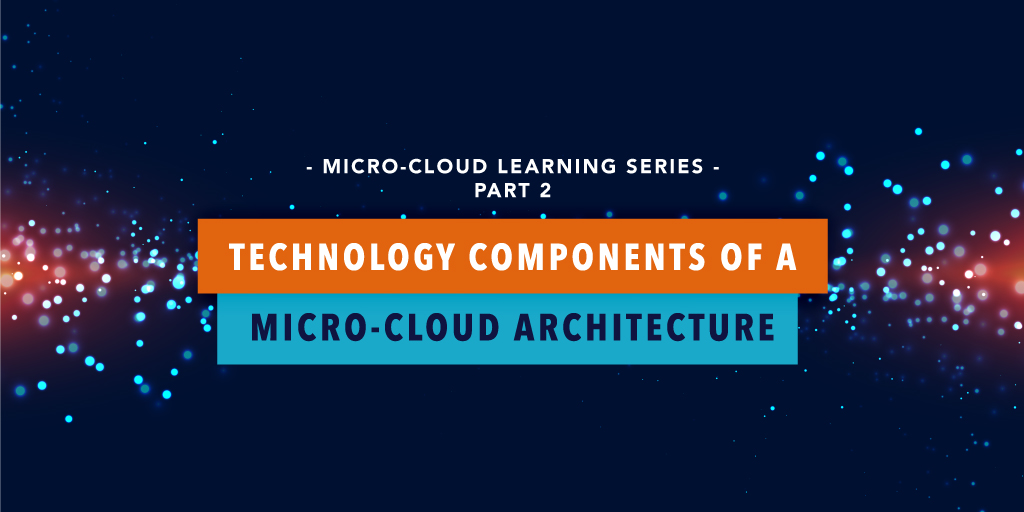
In the first part of our micro-cloud learning series, we discussed how this technology is impacting educators and students worldwide. But what exactly does it take to get this technology up and running?
A micro-cloud implementation spans three distinct levels of a distributed architecture. These are the centralized cloud console, the micro-cloud instance(s), and the intelligent devices.
Centralized Cloud Console
The core of a micro-cloud deployment is the centralized cloud console. This is a control point resident in either a public or private cloud which serves as a single, consolidated place for both content (curation, management, distribution) and systems management (both user and device levels).
The centralized cloud console should have a repository function to house the resources of the pedagogical process, such as educational texts and content, structured learning plans, and adjunct educational material such as articles, videos, etc. Once this content has been loaded into the cloud repository, policy can allow it to be automatically distributed to authorized micro-cloud instances. If a network connection to any given micro-cloud is not available, the update process will occur upon the next connection. Through this process, a standardized approach to education can be applied to ensure base-level compliance with the directives of the governing body for education.
Micro-Cloud Instance
In order for the micro-cloud architectural concept to work in practice, there needs to be a point of presence in each classroom (or school, depending upon the architecture) that meets minimum requirements to enable this approach. Normally found in the form of a server or appliance footprint, a micro-cloud instance has a number of required functional components/features, which are outlined below.
Localized Wi-Fi Capability
The power of the micro-cloud lies in its ability to present a cloud-based environment locally to the students. To accomplish this, the students must be able to simply and easily connect their devices to the micro-cloud resources wirelessly. Different micro-cloud platforms have varying scales in terms of number of active concurrent students supported; hence some are more appropriate at the classroom level, and others at an entire school level.
Localized LMS Hosting
Once students are connected to the micro-cloud, the learning process should be guided by a learning management system that manages a defined curriculum, assessment, and progress to plan. This helps both the students and teachers in their respective roles in the learning process and is driven by the cached content.
Structured Content Caching
When a curriculum is determined, it normally includes structured content such as texts, exercises, and other resources. The content should be stored locally in the micro-cloud and accessed by the students as they progress through the learning process. In the event of a network outage or limited bandwidth resource, the localized caching function ensures the learning process continues without impact to the students.
Unstructured Resource Caching
While structured content to follow the curriculum is mandatory, educators embracing the e-learning experience are finding that adjunct unstructured resources can significantly enhance learning, knowledge uptake, and motivation during the learning process. In some cases, unstructured resources such as YouTube videos, simulators, interactive maps, Wikipedia, etc. become as integral to the learning process as the basic curriculum texts themselves. Normally, these are selected either by the local teacher or by the curriculum management administrators who are accessing the centralized cloud console. As with the structured content, approved unstructured resources should also be stored locally on the micro-cloud to facilitate full-spectrum learning regardless of infrastructure limitations.
Network Resource Management
Particularly in these regions, internet connectivity is a valuable resource and great care must be taken to ensure maximum usage and minimal exploitation. To ensure maximum throughput per policies, the micro-cloud controls who can access internet resources and what can be accessed based upon user profile. In addition, bandwidth is optimized by caching web pages as they are accessed, making the next visit to the site free of bandwidth usage. Inside a classroom, when all students go to the same website (once it is cached), they have a feeling that internet speed is faster, but this is because micro-cloud delivers the content from the cache without using network bandwidth, improving overall user experience. School administrators can easily define permissions and have tight control of what is allowed over the internet, ensuring network usage focuses on education and protecting students from viewing unappropriated content.
Enterprise Infrastructure Integration
Security, compliance, and standardization are crucial in most country/region-wide rollouts of e-learning. The micro-cloud is a technology resource normally deployed by the schools/governments, so the platforms chosen should accommodate integration with existing management and control paradigms required to facilitate its use. Security, management, and networking foundations such as Active Directory and/or LDAP authentication capabilities, single sign-on support, and policy-based management will be required for a wide rollout of the micro-cloud technology throughout a region or country.
Access by Smart Devices
The e-learning paradigm can be leveraged by a number of student device implementations, from smartphones to PCs and Chromebooks. The keys are that the student devices have local processing capability (i.e., run apps or applications), Wi-Fi capability (to attach to the local micro-cloud instance), and that they fit into the centralized management schema (to meet audit, compliance, and security objectives).
With these devices, students will interact with the curriculum, the content, and their teachers. The intelligent device—once enabled by the rest of the functional micro-cloud architecture—becomes the student’s point to access knowledge, interact with educators, and have his/her progress tracked in real time as part of a broader view of how well the curriculum and pedagogical process is working across the region.
The Future
World leaders have aligned on the understanding that a powerful key to building a better world is through the ability to drive globalized learning at a local level. The micro-cloud—proven for years in commercial and enterprise settings—is the result of the technology and education sectors joining forces to determine how this global learning can happen in the face of a very real digital divide for the emerging/developing nations.
If you missed the first part of our insightful micro-cloud learning series, you can check it out here. Want to learn more about how micro-cloud learning can aid students and educators across the globe? Register for our upcoming webinar, Innovations Bringing STEM and Robotics to Today’s Classrooms.



